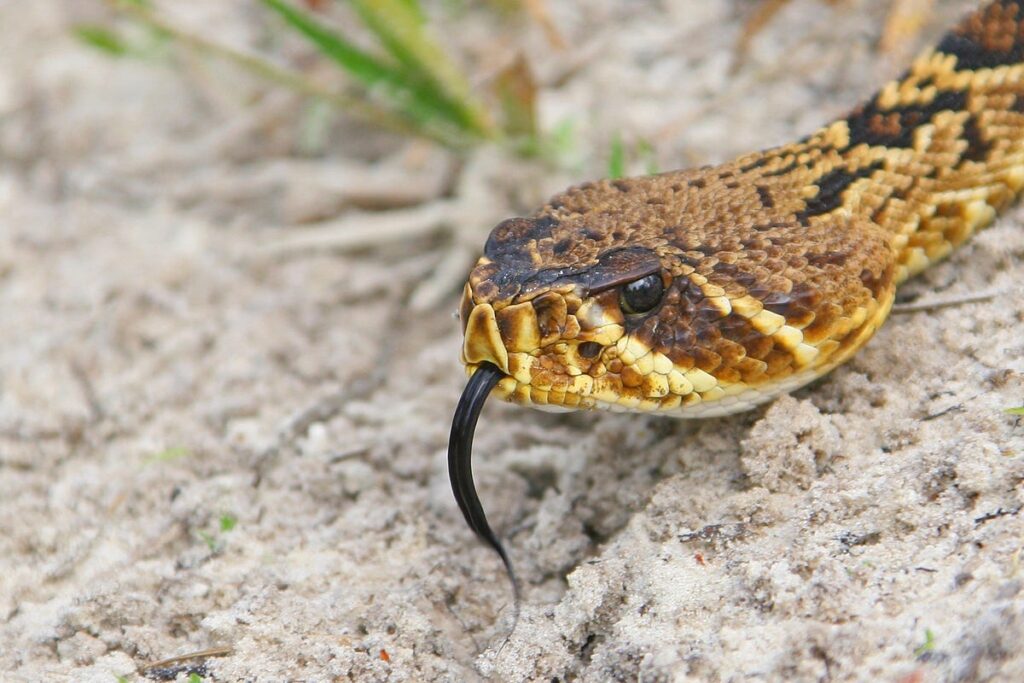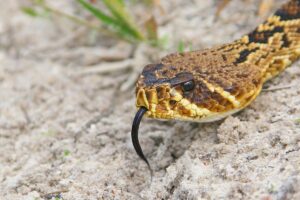
Slithering Secrets: 3 Ways to Identify Potentially Poisonous Snakes
Snakes, with their mesmerizing coils and silent movements, can evoke a range of emotions – fascination, fear, and sometimes, concern about their venomous potential. While not all snakes are poisonous (the correct term is venomous), encountering one in the wild can trigger the question: “Is this snake dangerous?”. This article explores three key ways to identify potentially venomous snakes, empowering you to make informed decisions during encounters.
Important Disclaimer: It’s crucial to prioritize safety over definitive identification. If you’re unsure about a snake’s venom status, it’s best to assume it’s dangerous and maintain a safe distance.
Understanding Venomous vs. Non-Venomous Snakes: A Crucial Distinction
The key difference between venomous and non-venomous snakes lies in their ability to produce and inject venom through specialized fangs. Venomous snakes use venom to subdue prey and defend themselves. Non-venomous snakes, on the other hand, rely on constriction (squeezing) to kill their prey.
Here’s a table summarizing the key differences:
| Feature | Venomous Snakes | Non-Venomous Snakes |
|---|---|---|
| Venom Production | Produce venom | Do not produce venom |
| Fangs | Specialized fangs for venom injection | No specialized fangs, may have small teeth for grasping |
| Bite Symptoms | May cause pain, swelling, and other symptoms | Bite may cause localized pain or swelling |
Remember: This is a general guideline. There can be exceptions, and some non-venomous snakes can deliver a mildly venomous bite. If bitten by any snake, seek medical attention immediately.
Method 1: Head Shape – A General Indicator, Not a Guarantee
One method for identifying potentially venomous snakes is to observe their head shape. However, it’s important to remember that this is not a foolproof method, and there are exceptions.
-
Triangular Head Shape: Many venomous snakes in North America, such as rattlesnakes, copperheads, and cottonmouths, have triangular-shaped heads. This shape is often wider than their neck, creating a distinct, arrow-like appearance.
-
Rounded Head Shape: Most non-venomous snakes have rounded or oval-shaped heads that are not wider than their necks. However, some venomous snakes, like coral snakes, also have rounded heads.
Here’s the crucial caveat: Some non-venomous snakes can flatten their heads to appear more threatening, mimicking the triangular shape of venomous snakes. Therefore, relying solely on head shape is not a safe way to identify a venomous snake.
Method 2: Pupil Shape – A Helpful Clue, But Not Definitive
Another way to gain clues about a snake’s potential venom status is by observing its pupil shape.
-
Vertical Pupils: Many venomous snakes in North America, like rattlesnakes and cottonmouths, have vertical pupils that resemble cat eyes. Vertical pupils are thought to provide better depth perception for hunting at dusk and dawn.
-
Round Pupils: Most non-venomous snakes have round pupils similar to those of humans. However, this is not a definitive rule, and some coral snakes also have round pupils.
Similar to head shape, pupil shape can be a helpful clue, but it shouldn’t be the sole factor in identifying a venomous snake. Certain lighting conditions can make it difficult to distinguish pupil shape accurately.
Method 3: Heat Pits – A Unique Feature of Pit Vipers
This method is specific to identifying pit vipers, a subfamily of venomous snakes that includes rattlesnakes, copperheads, and cottonmouths. Pit vipers have a unique feature called heat pits located between their nostrils and eyes.
- Heat Pits: These are small, indention-like pits that are sensitive to infrared radiation. They help pit vipers to detect warm-blooded prey, even in complete darkness.
Non-venomous snakes do not have heat pits. However, if you’re unsure about a snake’s identity, it’s safest to assume it’s venomous and maintain a safe distance.
Beyond These Methods: Additional Safety Tips
While the three methods discussed can provide helpful clues, here are some additional safety tips to remember when encountering a snake in the wild:
-
Maintain a Safe Distance: Never approach a snake. Admire them from afar and allow them plenty of space to move away.
-
Do Not Attempt to Handle: Even if you suspect a snake is non-venomous, it’s best to avoid handling it.
-
Beyond These Methods: Additional Safety Tips
-
Do Not Attempt to Handle: Even if you suspect a snake is non-venomous, it’s best to avoid handling it. Wild snakes can carry parasites and diseases, and even a non-venomous bite can become infected.
-
Identify Local Venomous Species: Familiarize yourself with the common venomous snakes in your area. Many local parks and wildlife organizations offer resources to help with identification.
-
Be Aware of Your Surroundings: Pay attention to where you’re walking, especially in areas with tall grass or rocky terrain where snakes may be camouflaged.
-
Wear Proper Footwear: Consider wearing sturdy boots or shoes when hiking or exploring areas where snakes might be present.
-
Teach Children Snake Safety: Educate children about the importance of maintaining a safe distance from snakes and never attempting to touch them.
By following these safety tips and using the identification methods discussed with caution, you can minimize the risk of encountering a venomous snake and ensure a safe and enjoyable outdoor experience.
Remember: When in Doubt, Keep Your Distance
If you’re ever unsure about a snake’s venom status, the safest course of action is to assume it’s dangerous and maintain a safe distance. Snakes typically try to avoid confrontation with humans. If you give them space, they’ll likely move on their way.
-
National Wildlife Federation – Snake Safety Tips: https://www.nwf.org/ This webpage provides an abundance of information on snake safety, including tips for identification, avoiding bites, and what to do in case of an encounter.
-
National Geographic – How to Identify Venomous Snakes: https://wydaily.com/news/regional-national/2021/05/06/danger-noodles-five-things-to-know-about-local-snakes/ National Geographic’s resource offers insights on distinguishing features between venomous and non-venomous snakes, along with regional variations in venomous species.
-
Herpetological Society of America: https://ssarherps.org/ This website is a valuable resource for those interested in learning more about reptiles and amphibians. The society itself is a professional organization dedicated to the study and conservation of these creatures.
Conclusion: Knowledge Empowers Safety
While identifying venomous snakes can be a complex task, understanding the key methods and prioritizing safety can empower you to make informed decisions during encounters. Remember, these methods are not foolproof, and caution is always necessary. By appreciating snakes from a safe distance and respecting their role in the ecosystem, you can coexist peacefully with these fascinating creatures.
-




